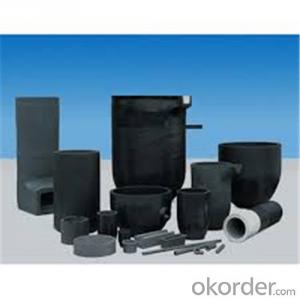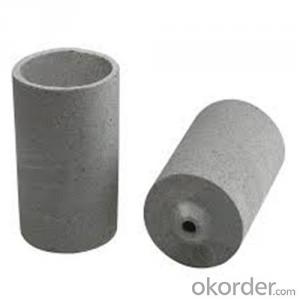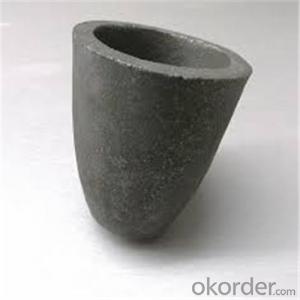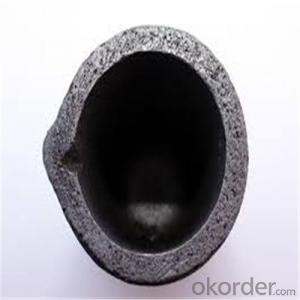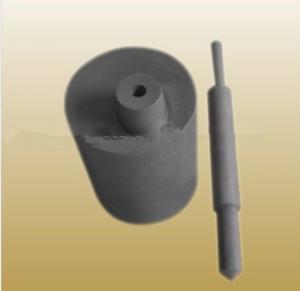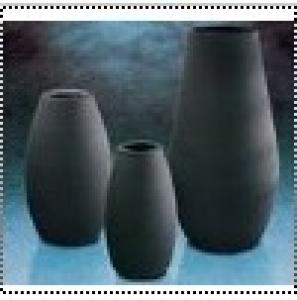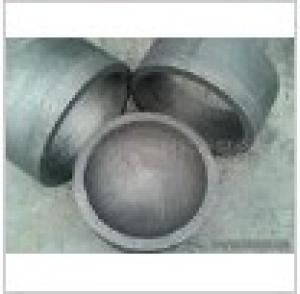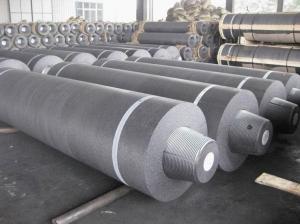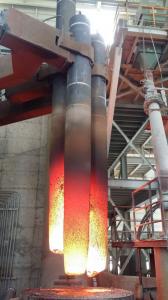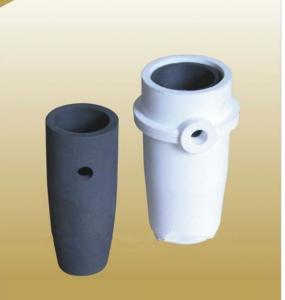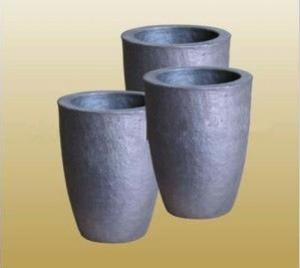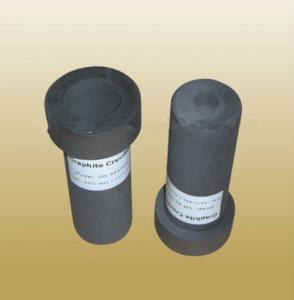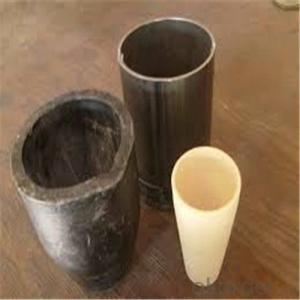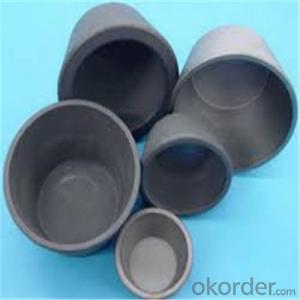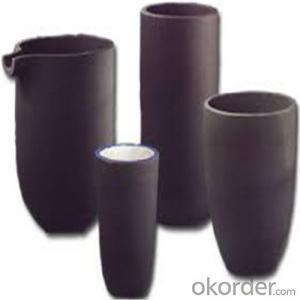Refractory Crucibles Sic Crucible For Brass/Aluminum 2015
- Loading Port:
- Shanghai
- Payment Terms:
- TT OR LC
- Min Order Qty:
- 1 pc
- Supply Capability:
- 1000 pc/month
OKorder Service Pledge
OKorder Financial Service
You Might Also Like
Quick Details for Refractory Crucibles Sic Crucible For Melting Copper/Brass/Aluminum
| Type: | High Strength, graphite crucible crucible | Application: | melting metal | Height: | as your requirements |
| Composition: | High Pure | Top Diameter: | 10-600mm | Bottom Diameter: | 10-1000mm |
| Place of Origin: | China (Mainland) | Brand Name: | Model Number: | ||
| Color: | Black grey | Si3N4%: | 5min | Fe2O3%: | 0.7max |
| C%: | 30-45 | Apparent porosity: | 30max | Refractoriness: | 1680 |
| Bulk Density: | 1.71min | Using life: | >5000 hours | MAX temperature: | 1600c |
Packaging & Delivery
| Packaging Details: | Seaworty packing or as per customer's detail requirement of graphite crucible. |
| Delivery Detail: | within 20-30 days after confirm order of graphite cru |
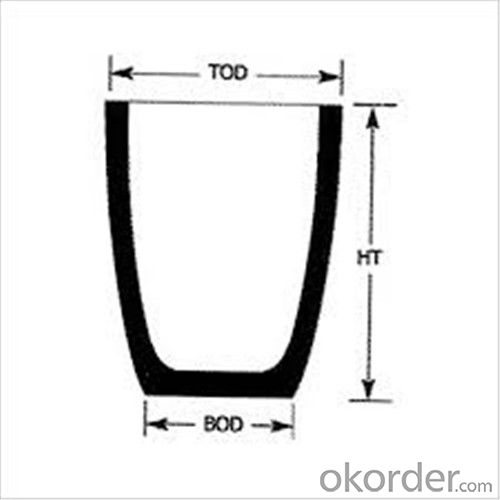

Refractory Crucibles Sic Crucible For Melting Copper/Brass/Aluminum
Physicochemical Properties
Type of Crucible | Type S | Type D |
Carbon Content/% | ≥38 | ≥45 |
Bulk Density/(g/cm3) | ≥1.70 | ≥1.85 |
Apparent Porosity/% | ≤29 | ≤21 |
Compression Strength/MPa | ≥20 | ≥25 |
Refractoriness/°C | ≥1400 | ≥1400 |
Type S: Clay graphite crucible
Type D: Isostatic pressing graphite crucible
Cited from CNS China National Standard of Graphite Crucible, which is solely drifted by TIANFU company.
Content Composition
C% | Sic% | AL2O3% | SIO2% |
45%-50% | 20%-30% | 10%-12% | 15-25% |
Packaging & Shipping
Package: Wooden case and wooden pallet or pack as customer's requirement of graphite crucible.
Delivery time: depend on distance, usually 20 days to 50days after deposit of graphite crucible.
We can supply the products according to customer's drawings, samples and performance requirement.
Other Products

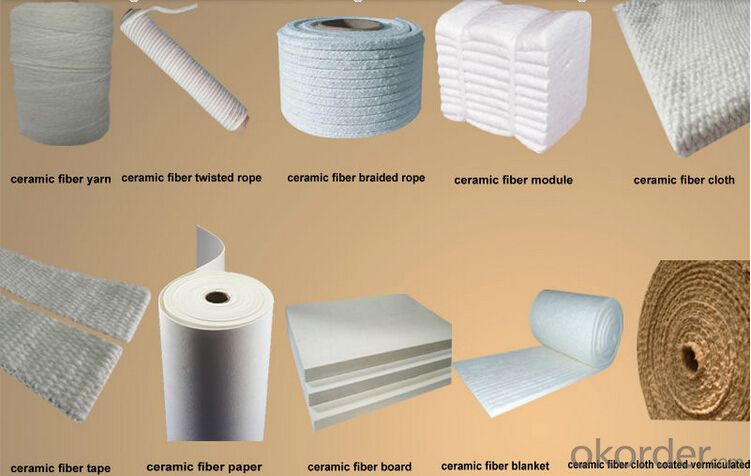
Welcome to visit our factory.
- Q:Can a graphite crucible be used for melting magnetic materials?
- Using a different grammatical structure and expressions: It is not possible to use a graphite crucible for melting magnetic materials. Graphite, being a non-magnetic substance, lacks the capacity to create or maintain a magnetic field. Consequently, it is unsuitable for melting magnetic materials as it cannot effectively engage with or confine them.
- Q:How do you determine the appropriate crucible tongs for a specific application?
- To determine the appropriate crucible tongs for a specific application, you need to consider several factors. First, assess the size and shape of the crucible you will be using. Ensure that the tongs can securely grip and handle the crucible without any risk of slippage or damage. Additionally, consider the material being used in the crucible and the temperature it will be subjected to. Select tongs made from a material that can withstand the heat and chemical reactivity of the application. Finally, consider the weight of the crucible and the amount of control you require during handling. Choose tongs that are comfortable to hold and provide the necessary grip and control for safe and efficient handling.
- Q:How does the thermal conductivity of the molten metal affect the performance of a crucible?
- The performance of a crucible is determined by the thermal conductivity of the molten metal, which plays a crucial role. Thermal conductivity refers to a material's ability to conduct heat, and in the case of a crucible, it directly impacts its ability to withstand and distribute high temperatures. A high thermal conductivity in the molten metal enables faster heat transfer from the crucible, leading to a more uniform distribution of heat. This is advantageous as it allows for quicker and more efficient melting or heating of the metal inside the crucible. It also helps maintain a consistent temperature throughout the crucible, which is vital in certain industrial processes that require precise temperature control. Conversely, a low thermal conductivity in the molten metal can have detrimental effects on the performance of a crucible. It can cause uneven heat distribution, resulting in hot spots or cold spots within the crucible. This unevenness can lead to inconsistent melting or heating of the metal, resulting in poor quality or incomplete reactions in industrial processes. Moreover, the lack of efficient heat transfer can potentially cause overheating in certain areas of the crucible, leading to premature failure or damage. In conclusion, the thermal conductivity of the molten metal directly impacts the performance of a crucible. A high thermal conductivity enables faster and more efficient heat transfer, leading to better temperature control and more effective industrial processes. Conversely, a low thermal conductivity can cause uneven heat distribution and potential damage to the crucible, thereby compromising its performance.
- Q:What are the different methods of preventing graphite crucible breakage?
- To prevent the breakage of graphite crucibles, there are various methods that can be utilized: 1. Ensuring proper handling and storage is crucial. Careful handling and avoiding sudden or rough movements that could cause impact or stress on the crucible are effective ways to prevent breakage. Additionally, storing the crucibles in a secure location, away from potential hazards or sources of damage, is important. 2. Following controlled heating and cooling procedures is essential. Graphite crucibles are exposed to high temperatures during the melting process, so it is necessary to heat and cool them gradually and in a controlled manner. This approach helps minimize thermal shock and stress on the crucible, thereby reducing the risk of breakage. 3. Preheating the graphite crucible before use can also prevent breakage. This involves gradually heating the crucible to a specific temperature range before adding the molten material. Preheating minimizes the temperature difference between the crucible and the molten material, thus reducing the risk of thermal shock and potential breakage. 4. Applying protective coatings to the graphite crucible provides an additional layer of protection against breakage. Coatings like boron nitride or alumina improve thermal shock resistance and decrease the likelihood of crucible failure. 5. Regularly inspecting and maintaining the graphite crucible is crucial. Regular inspections for any signs of damage or wear, such as cracks, chips, or defects, are necessary to prevent breakage. Addressing these issues immediately can prevent further deterioration. Additionally, routine maintenance, including cleaning and removing build-up or impurities, can prolong the crucible's lifespan and prevent breakage. By implementing these methods, individuals or industries can significantly reduce the risk of graphite crucible breakage, ensuring their longevity and optimal performance in various high-temperature applications.
- Q:How to improve the service life of graphite crucible
- 1. Adopt isostatic graphite material;2. Use in a vacuum or inert atmosphere;3, prevent cold, hot;4. Avoid melting material with crucible reaction;5, the structural design rationalization.
- Q:Can graphite crucibles be used for alloy preparation?
- Yes, graphite crucibles can be used for alloy preparation. Graphite crucibles are commonly used in metallurgy and foundry applications due to their high melting point, chemical resistance, and thermal conductivity. They can withstand high temperatures required for alloy preparation and are suitable for melting various metals and alloys. Graphite crucibles provide a stable and controlled environment for the melting process, allowing for precise alloy composition and homogeneity. Additionally, graphite crucibles have good thermal shock resistance, meaning they can handle rapid temperature changes without cracking or breaking. Therefore, graphite crucibles are a reliable choice for alloy preparation in various industries such as automotive, aerospace, and manufacturing.
- Q:How does the purity of the graphite affect the melting process in a crucible?
- The purity of graphite can have a significant impact on the melting process in a crucible. Graphite is commonly used as a crucible material due to its high melting point and excellent thermal conductivity. However, impurities present in the graphite can introduce certain variations in the melting process. High purity graphite, with minimal impurities, offers several advantages. Firstly, it has a higher melting point compared to impure graphite. This means that it can withstand higher temperatures without undergoing any structural changes or degradation. Consequently, the crucible made from high purity graphite can be used in processes that require extremely high temperatures, such as melting metals or performing high-temperature chemical reactions. In addition, high purity graphite has better thermal conductivity. This property allows for more efficient heat transfer, resulting in faster and more uniform melting. With improved thermal conductivity, the heat is distributed evenly throughout the crucible, preventing hotspots and ensuring a consistent melting process. This is especially important when melting alloys or other materials with varying melting points, as it helps achieve a homogeneous melt. On the other hand, impurities in graphite can have a detrimental effect on the melting process. Impure graphite may have a lower melting point compared to the high purity counterpart. This can lead to premature melting or deformation of the crucible, limiting its ability to withstand high temperatures. Additionally, impurities can act as nucleation sites, causing irregular crystallization and affecting the quality of the melted material. Furthermore, impurities can reduce the thermal conductivity of the graphite. This can result in inefficient heat transfer, leading to uneven heating and longer melting times. Non-uniform heating can cause localized overheating or incomplete melting, which can negatively impact the quality and consistency of the final product. In conclusion, the purity of graphite plays a crucial role in the melting process in a crucible. High purity graphite offers a higher melting point, better thermal conductivity, and improved overall performance, ensuring efficient and consistent melting. Conversely, impure graphite can have a lower melting point, reduced thermal conductivity, and can negatively affect the quality of the melted material. Therefore, choosing a high purity graphite crucible is essential for achieving optimal results in various melting applications.
- Q:Can a graphite crucible be used for smelting or refining ores?
- Yes, a graphite crucible can be used for smelting or refining ores. Graphite crucibles are commonly used in high-temperature applications, including metal smelting and refining. Graphite has excellent thermal conductivity and high melting point, making it an ideal material for containing and conducting heat during the smelting or refining process. Additionally, graphite crucibles have good chemical resistance, which allows them to withstand the corrosive nature of the ores and the chemicals involved in the refining process. Overall, graphite crucibles are a popular choice for smelting and refining operations due to their durability, heat resistance, and chemical stability.
- Q:Can a graphite crucible be used for high-temperature reactions?
- Yes, a graphite crucible can be used for high-temperature reactions. Graphite has a high melting point of around 3,500 degrees Celsius, making it suitable for withstanding extreme temperatures. It also has excellent thermal conductivity, which allows for efficient heat transfer and uniform heating of the reactants. Additionally, graphite is chemically inert and has low reactivity, making it resistant to corrosion and suitable for various chemical reactions. Therefore, a graphite crucible is commonly used in high-temperature applications such as melting metals, pyrolysis, and other thermally-driven reactions.
- Q:Can a graphite crucible be used for aluminum casting?
- Yes, a graphite crucible can be used for aluminum casting. Graphite crucibles are commonly used in foundries and metal casting operations due to their high melting point, excellent thermal conductivity, and resistance to chemical reactions. Aluminum has a relatively low melting point (around 660°C or 1220°F), making it suitable for graphite crucibles, which can withstand temperatures up to 3000°C (5432°F). The graphite crucible also helps in facilitating the transfer of heat from the heat source to the aluminum, ensuring proper melting and casting of the metal. However, it is important to note that graphite crucibles may undergo wear and tear over time due to the corrosive nature of aluminum, so regular inspection and replacement may be necessary to maintain casting quality.
1. Manufacturer Overview |
|
|---|---|
| Location | |
| Year Established | |
| Annual Output Value | |
| Main Markets | |
| Company Certifications | |
2. Manufacturer Certificates |
|
|---|---|
| a) Certification Name | |
| Range | |
| Reference | |
| Validity Period | |
3. Manufacturer Capability |
|
|---|---|
| a)Trade Capacity | |
| Nearest Port | |
| Export Percentage | |
| No.of Employees in Trade Department | |
| Language Spoken: | |
| b)Factory Information | |
| Factory Size: | |
| No. of Production Lines | |
| Contract Manufacturing | |
| Product Price Range | |
Send your message to us
Refractory Crucibles Sic Crucible For Brass/Aluminum 2015
- Loading Port:
- Shanghai
- Payment Terms:
- TT OR LC
- Min Order Qty:
- 1 pc
- Supply Capability:
- 1000 pc/month
OKorder Service Pledge
OKorder Financial Service
Similar products
New products
Hot products
Hot Searches
Related keywords
